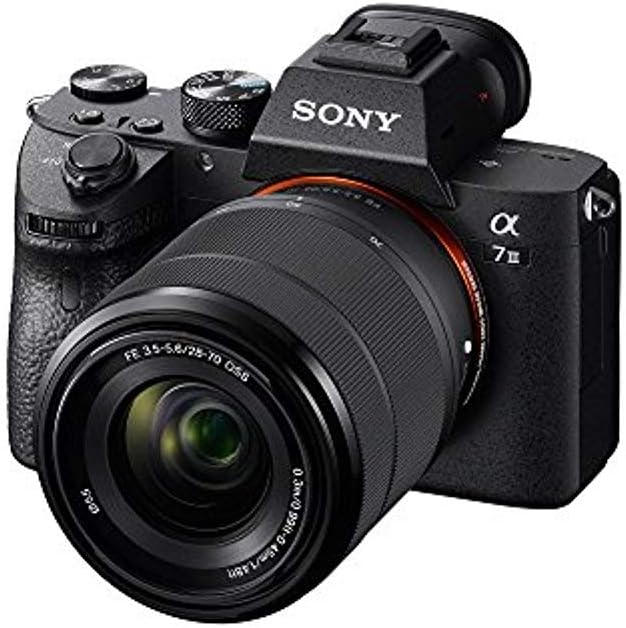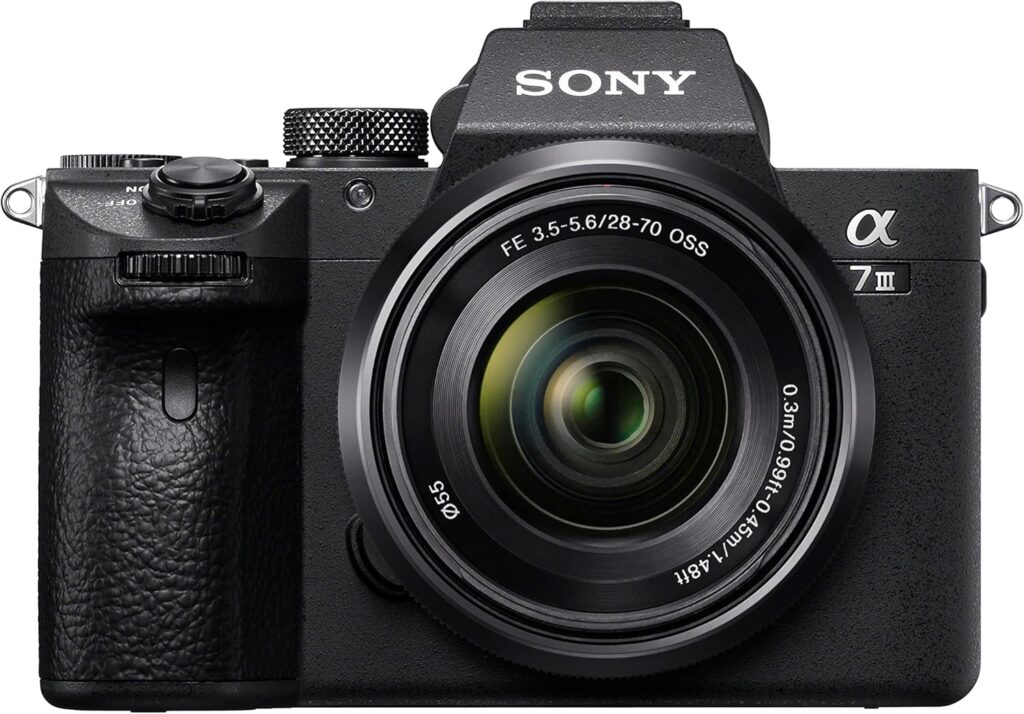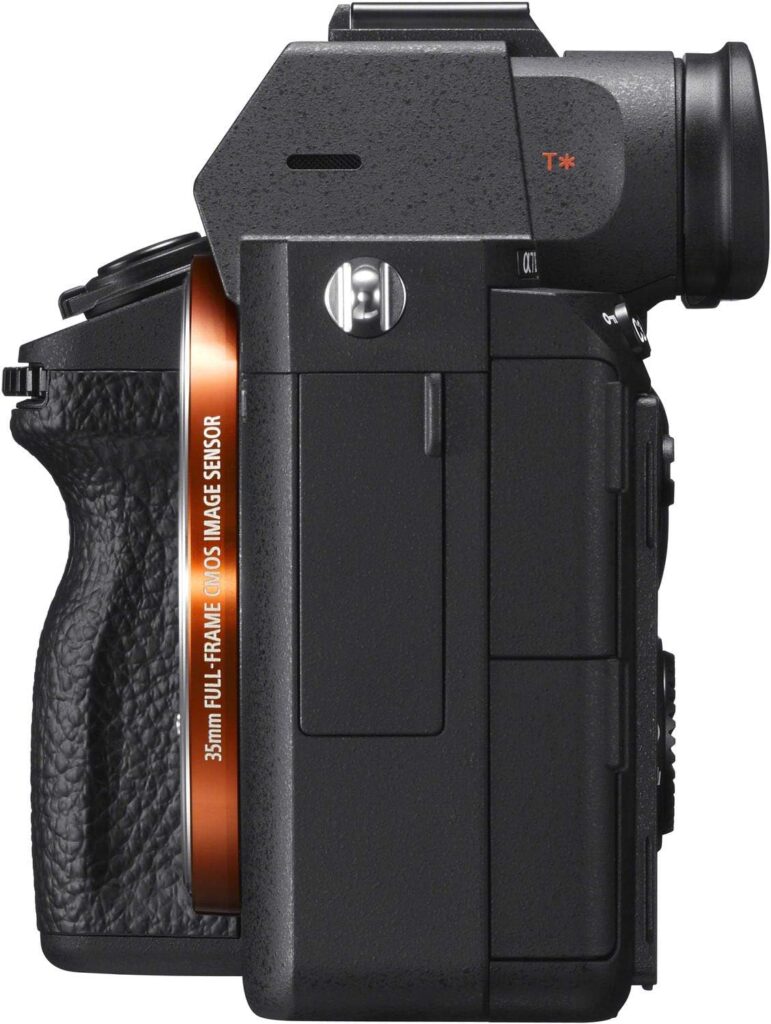Have you ever wondered what goes into making a camera stand out in the crowded world of digital photography? I recently got my hands on the Sony a7 III, and let me just say, there’s more to this than just a fancy name. Through a closer look, I aim to help you understand why this full-frame mirrorless camera is so talked about.

When I first unboxed the Sony a7 III (ILCEM3K/B), it didn’t take long to appreciate the sleek and professional design. Sony packs this model with a 28-70mm lens, a generous addition that sets a robust starting point for both beginners and seasoned photographers. Its matte black finish exudes a sense of elegance, making it an appealing gadget to carry around.
Holding the Sony a7 III, the first thing I noticed was how comfortably it fit in my hand. Despite its advanced features, the camera doesn’t feel unnecessarily bulky. Its ergonomic design makes long photography sessions manageable. It even comes with a helpful shoulder strap for ease of carrying.
The package comes with a variety of accessories that enhance the overall experience. Here’s a simple breakdown:
| Item | Purpose |
|---|---|
| SEL2870 lens | Versatile lens for everyday shooting |
| Lens hood | Reduces lens flare when shooting in bright conditions |
| Lens cap | Protects the lens when not in use |
| Lens rear cap | Keeps dust and debris out of the lens |
| Rechargeable Battery | Provides power for extended shooting sessions |
| AC Adapter | Allows charging without a battery charger |
| Shoulder strap | Offers a hands-free way to carry the camera |
| Body cap | Protects the sensor when a lens isn’t attached |
| Accessory shoe cap | Covers the accessory shoe when not in use |
| Eyepiece cup | Adds comfort and shields light during use |
| Micro USB cable | For charging and data transfer |
All these components come together in a neat package that screams readiness for nearly any shooting situation.
This camera is more than its looks; its technical prowess is undeniably a strong suit. Packing a 24.2MP BSI full-frame image sensor with a 1.8X readout speed, it promises high-resolution images and videos.
So, what makes this sensor a highlight? The back-illuminated 35mm full-frame sensor essentially allows for rich image quality, even in challenging lighting conditions. Whether I shot under the glaring midday sun or in low-lit settings, the camera adapted impressively. The wide ISO range of 50 to 204,800 offers flexibility, ensuring low noise and crisp details in a variety of environments.
A point that stood out was the capability to shoot up to 10 frames per second, both silently and with a mechanical shutter. This speed means capturing action-packed scenes or fleeting moments without missing a beat. Plus, its silent shutter mode proved to be a blessing when taking candid shots or in noise-sensitive areas.
Autofocus can make or break a camera like this, and Sony has left no stone unturned. With 693 phase-detection points and 425 contrast AF points covering 93% of the image, focusing is rapid and accurate.
The extensive coverage ensures subjects are in focus almost instantly. From portraits to landscapes, the precision of the autofocus aids in achieving sharp results. It’s almost like having a pair of extra eyes, making sure nothing misses focus.
I took the Sony a7 III to various settings—from busy cityscapes to tranquil parks—and the autofocus consistently impressed. Tracking moving subjects, like bustling crowds or playful pets, was handled smoothly with minimal effort on my part.
One of the primary reasons anyone would invest in such a camera is image quality, and Sony really delivers here. The combination of the sensor, dynamic range, and support for 14-bit uncompressed RAW results in stunning images.
With a whopping 15-stop dynamic range, shadows, and highlights are maintained beautifully. I found myself appreciating how well the camera handled scenes with high contrast, like a bright sky over dimly lit streets. Colors are rendered accurately, adding to the natural feel of the photos.
The 28-70mm lens that comes with the camera covers a broad range of photography styles. It’s great for portraits, landscape shots, and even close-up photography. While it might not replace a dedicated lens for specialized photography, it’s a solid all-rounder that complements the camera’s versatility.

While photography is its main focus, the Sony a7 III doesn’t lag in video capabilities. It supports 4K video recording with stunning detail and clarity—perfect for videographers or content creators.
The 4K footage boasts of crisp details, with smooth transitions between light and shadow. With the ability to take HDR videos, it’s as if Sony has hidden a mini video studio in this camera.
Handling video recording is made simple with features like reliable autofocus and image stabilization. Even handheld shots look steady, a bonus for anyone who shoots on the move. The camera menus and customizable buttons help quickly make changes to settings without having to pause your shoot.
A camera blessed with great hardware means little if it’s a pain to use. Fortunately, the Sony a7 III strikes a balance between offering professional features and ease of use.
I found the menu system intuitive, even though it comes with a wealth of customization options. Those new to Sony’s interface might need a little adjustment period, but it’s worth the effort. The ability to tailor and save frequently used settings saves time and makes shooting more efficient.
The 3-inch LCD is bright and clear, aiding in reviewing shots even in bright light. While the screen isn’t fully articulating, its tilting functionality provides some flexibility for low or high-angle shots.

It’s no secret that mirrorless cameras have a reputation for consuming battery quickly, so understanding the Sony a7 III’s power management was crucial during my review.
With a rechargeable battery like the NP-FZ100, I was able to capture approximately 610 shots on a single charge, which is respectable for a camera in this category. It’s perfect for full-day shoots, and the option for in-camera charging via the AC adapter is quite handy.
The camera features Wi-Fi, NFC, and Bluetooth, allowing for hassle-free transfer of images. Connecting to my smartphone was a breeze, and sharing pictures on the go was quicker than I initially imagined. These features are an added bonus for those who need quick uploading or sharing without the hassle of swapping cards or connecting cables.
So, after lots of clicks, adjustments, and a bit of getting used to, I’d say the Sony a7 III holds up against its hefty reputation. It’s a powerful tool for anyone looking seriously at photography, whether as a professional or an enthusiastic hobbyist. The balanced combination of image quality, autofocus precision, and user-friendly design makes it a go-to for capturing the moments that matter.
If you’re on the hunt for a reliable, versatile, and impressive camera, the Sony a7 III might just be your new best friend. It offers numerous features to grow into as your skills improve, leaving little to be desired. For those ready to invest in their craft, this camera offers substantial returns in the form of beautiful, lifelong memories.